To accompany contemprory strategy analysis concepts techiniques application chapter01slides
Bạn đang xem bản rút gọn của tài liệu. Xem và tải ngay bản đầy đủ của tài liệu tại đây (58.44 KB, 11 trang )
PRESENTATION SLIDES
To accompany:
Contemporary Strategy Analysis:
Concepts, Techniques, Applications
(5th edition, Blackwell, 2004)
Robert
Robert M.
M. Grant
Grant
Assisted by Kate Grant
The
The Concept
Concept of
of Strategy
Strategy
OUTLINE
• The role of strategy in success
• A framework for strategy analysis
• The evolution of strategic management
• Corporate strategy and business strategy
• Strategy making: Design or process?
• The role of strategy
Elements
Elements of
of Success
Success
GOALS
MADONNA
GIAP & NORTH
VIETNAMESE MILITARY
RICHARD WILLIAMS
(VENUS & SERINA’S DAD)
Single-minded quest for
stardom.
Reunification of Vietnam
under Communist rule.
Wealth & recognition
UNDERSTANDING Identified emerging trends
THE
in popular culture.
ENVIRONMENT
Recognized power of sex.
Understood showbiz
distribution channels.
Intimate knowledge of terrain. Careful diagnosis of
Understanding U.S. political
the physical and
system.
Psychological determinants
of success in women’s
professional tennis
RESOURSE
APPRAISAL
Recognized limited raw
talent. Relied on strengths
in self-promotion, imagecreation, relationship
management
Recognized economic and
military weaknesses and
political strengths.
Systematic developed
key skills and physical,
mental and social
attributes from an early age.
IMPLEMENTATION
Commitment to hard work.
Disciplined, inspirational
Leadership. Attention to
detail.
Tight control. Long-term
commitment. Effective
propaganda. Inspirational
leadership.
Careful meshing of
roles—father, coach &
manager. Sustained,
supportive leadership.
Common
Common Elements
Elements in
in Successful
Successful Strategy
Strategy
Successful
Strategy
EFFECTIVE IMPLEMENTATION
Long-term,
simple and
agreed
objectives
Profound
understanding of
the competitive
environment
Objective
appraisal of
resources
What
What is
is Strategy?
Strategy?
• Distinguishing strategy from tactics:
– Strategy is the overall plan for deploying
resources to establish a favorable position.
– Tactic is a scheme for a specific maneuver.
• Characteristics of strategic decisions:
– Important.
– Involve a significant commitment of
resources.
– Not easily reversible.
The
The Evolution
Evolution of
of Strategic
Strategic Management
Management
DOMINANT
THEME
MAIN
ISSUES
KEY
CONCEPTS
&
TOOLS
MANAGEMENT
IMPLICATIONS
1950s
1960s-early 70s
Mid-70s-mid-80s
Late 80s –1990s
Budgetary
planning &
control
Corporate
planning
Positioning
Competitive
advantage
Strategic
innovation
Financial
control
Planning
growth &diversification
Selecting
sectors/markets.
Positioning for
leadership
Focusing on
sources of
competitive
advantage
Reconciling
size with
flexibility &
agility
Capital
budgeting.
Financial
planning
Forecasting.
Corporate
planning.
Synergy
Industry analysis
Segmentation
Experience curve
Portfolio analysis
Resources &
Cooperative
capabilities.
strategy.
Shareholder
Complexity.
value.
Owning
E-commerce.
standards.
— Knowledge Management—
Coordination
& control by
Budgeting
systems
& virtual
Corporate
Diversification.
Restructuring. Alliances &
planning depts. Global strategies. Reengineering. networks
created. Rise of Matrix structures Refocusing.
Self -organiz
corporate
Outsourcing.
ation
planning
2000s
organization
The
The Basic
Basic Framework
Framework
Strategy:
Strategy: the
the Link
Link between
between the
the
Firm
Firm and
and its
its Environment
Environment
THE FIRM
Goals &
Values
Resources &
Capabilities
Structure &
Systems
STRATEGY
STRATEGY
THE
INDUSTRY
ENVIRONMENT
Competitors
Customers
Suppliers
Sources of Superior Profitability
INDUSTRY
ATTRACTIVENESS
RATE OF PROFIT
ABOVE THE
COMPETITIVE
LEVEL
How do we
make
money?
Which
businesses
should we be
in?
CORPORATE
STRATEGY
COMPETITIVE
ADVANTAGE
How should
we compete?
BUSINESS
STRATEGY
Strategy
Strategy Making
Making :: Design
Design or
or Process?
Process?
Strategy as Design
Strategy as Process
Planning and
rational choice
Many decision makers
responding to multitude of
external and internal forces
INTENDED
STRATEGY
EMERGENT
STRATEGY
REALIZED STRATEGY
Mintzberg’s
Mintzberg’sCritique
Critiqueof
ofFormal
FormalStrategic
StrategicPlanning:
Planning:
•The
•Thefallacy
fallacyof
of prediction
prediction––the
thefuture
futureisisunknown
unknown
•The
fallacy
of
detachment
-impossible
to
•The fallacy of detachment -- impossible todivorce
divorceformulation
formulationfrom
from
implementation
implementation
•The
•Thefallacy
fallacyof
offormalization
formalization--inhibits
--inhibitsflexibility,
flexibility,spontaneity,
spontaneity,
intuition
and
learning.
intuition and learning.
Strategy
Strategy Making
Making Processes
Processes within
within the
the
Company:
Company: Multiple
Multiple Roles
Roles of
of Strategy
Strategy
Strategy as Decision
Support
Improves the quality
of decision making
Strategy as Coordination
and Communication
Creates consistency
and unity
Strategy as Target
Improves performance by setting
high aspirations
The
The Role
Role of
of Analysis
Analysis
• Strategy analysis improves decision processes,
but doesn’t give answers.
• Strategy analysis assists us to identify and
understand the main issues.
• Strategy analysis helps us to manage complexity.
• Strategy analysis can enhance flexibility and
innovation by supporting learning.
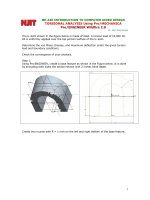

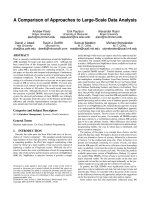

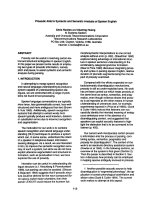
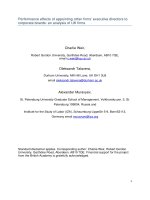
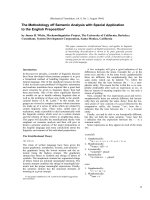
![small wind turbines [electronic resource] analysis, design, and application](https://media.store123doc.com/images/document/14/y/ql/medium_qlr1401476475.jpg)

